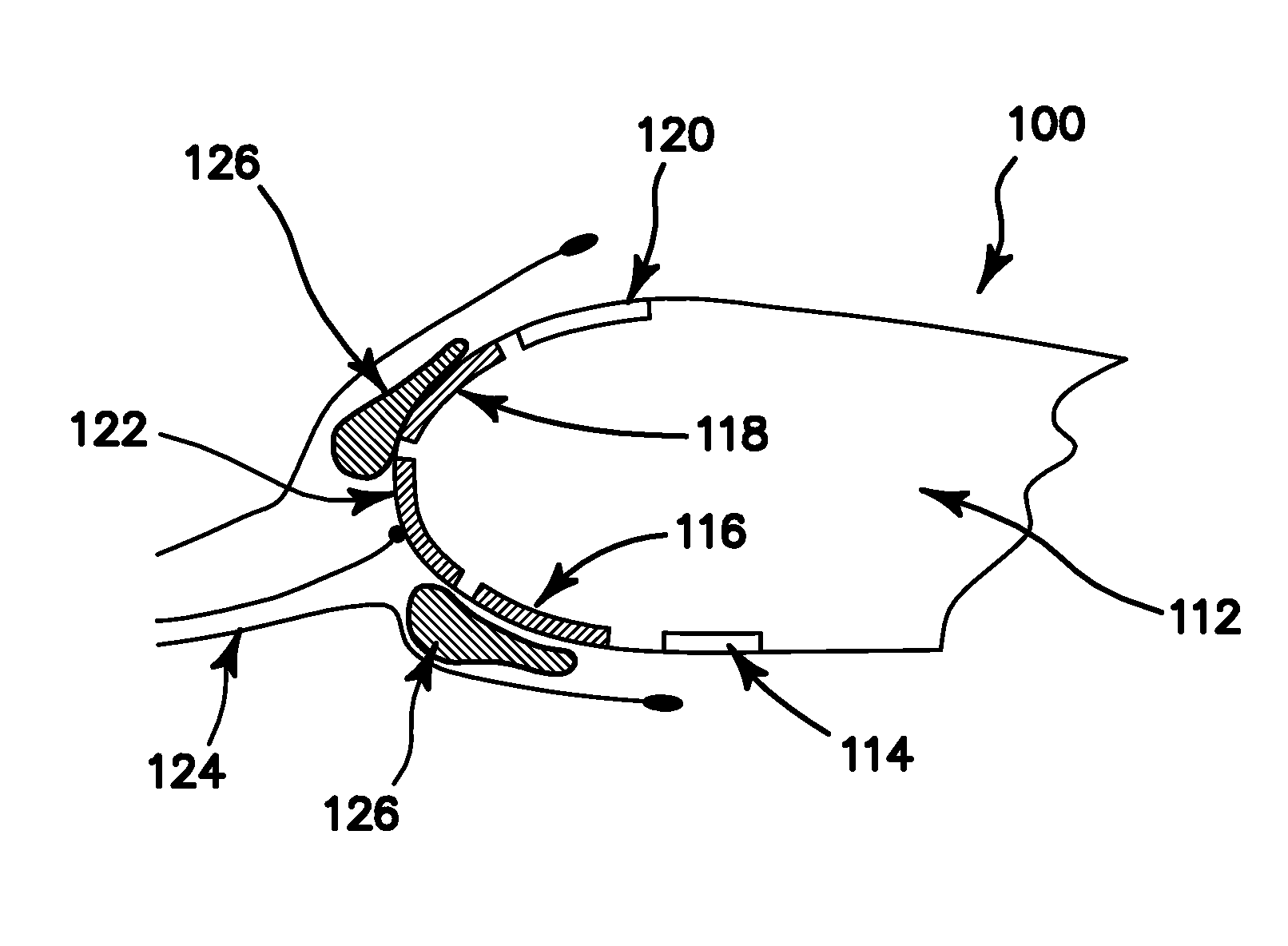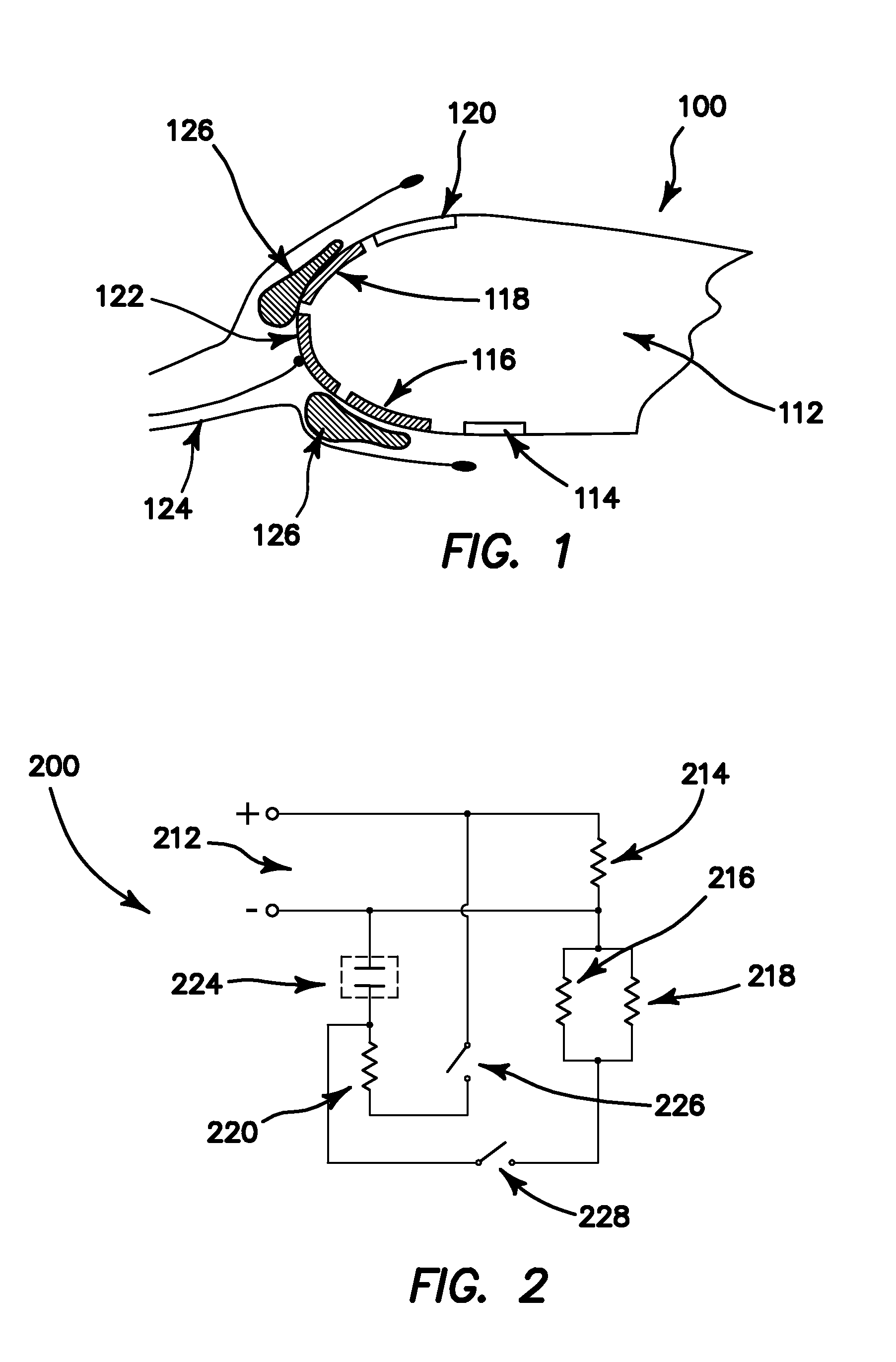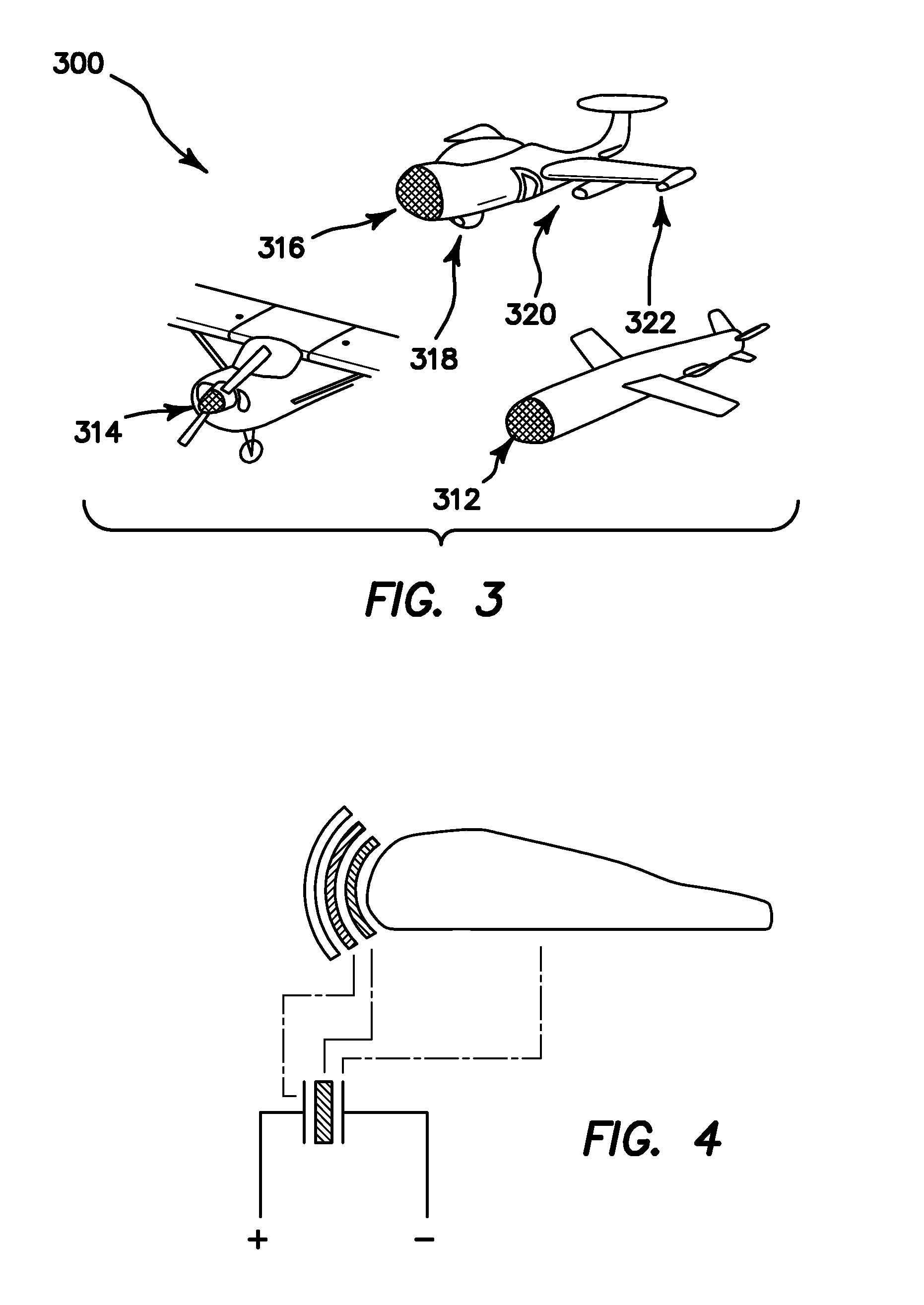Anti-icing, de-icing, and heating configuration, integration, and power methods for aircraft, aerodynamic, and complex surfaces
a technology of heating configuration and integration, applied in the direction of substantially flat resonant elements, resonance antennas, transportation and packaging, etc., can solve the problems of undesirable and/or dangerous flying performance, excessive weight of airfoil configuration, and ice build-up on the leading edge surface, so as to reduce the need for batteries, and improve the effect of energy efficiency
- Summary
- Abstract
- Description
- Claims
- Application Information
AI Technical Summary
Benefits of technology
Problems solved by technology
Method used
Image
Examples
Embodiment Construction
[0053]One aspect of the invention provides a method for anti-icing, de-icing, and a heating system for aircraft wings and forward facing aerodynamic surfaces, for example, wind turbines, propeller spinners, aircraft radomes, and nosecones. The invention comprises a first heated section near the central stagnation zone to prevent cupped or shelled icing from forming there, and at least one upper and lower heater section in areas aft of the central heater. Typically, runoff melt-water from the central heater will refreeze together with other ice accumulation. By periodically activating the upper and lower heaters to melt or break-up the ice-to-surface interface, the accumulated ice will be removed by aerodynamic (or other) forces.
[0054]FIG. 1 shows a schematic 100 of a cross-section of an aircraft wing 112, central heater 122 at the stagnation zone, lower heaters 114 and 116, upper heaters 118 and 120, ice layer 126, and aerodynamic streamlines 124. As an alternative arrangement, FIG....
PUM
 Login to View More
Login to View More Abstract
Description
Claims
Application Information
 Login to View More
Login to View More - R&D
- Intellectual Property
- Life Sciences
- Materials
- Tech Scout
- Unparalleled Data Quality
- Higher Quality Content
- 60% Fewer Hallucinations
Browse by: Latest US Patents, China's latest patents, Technical Efficacy Thesaurus, Application Domain, Technology Topic, Popular Technical Reports.
© 2025 PatSnap. All rights reserved.Legal|Privacy policy|Modern Slavery Act Transparency Statement|Sitemap|About US| Contact US: help@patsnap.com



